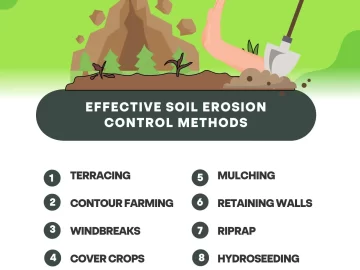The ultimate goal of stormwater management is to maintain the health of streams,
lakes and aquatic life as well as provide opportunities for human uses of water by
mitigating the effects of urban development. To achieve this goal stormwater
management strives to maintain the natural hydrologic cycle, prevent an increased
risk of flooding, prevent undesirable stream erosion, and protect water quality.
Maintain the natural hydrologic cycle
A decrease in infiltration reduces soil moisture replenishment and groundwater
recharge. Soil moisture is required to sustain vegetation. Loss of groundwater
recharge can reduce stream baseflow, the flow that continues between storms and
sustains aquatic life. It can also reduce the quantity of groundwater available for
domestic and agricultural water supplies.
Prevent an increased risk of flooding
Summer floods, resulting from high intensity thunderstorms, are more common in
urban areas because of the increased runoff of precipitation and the presence of
systems that carry this runoff to streams quickly. Flooding can lead to loss of life
and property damage.
Prevent undesirable stream erosion
Erosion is a normal part of stream behaviour. Stormwater is managed to prevent
excessive erosion that may prohibit a stream from fulfilling its normal function of
conveying water and sediment. As a consequence of urbanization, there is an
increase in the volume and rate at which sediment and water are delivered to
streams. This causes an increase in the erosive forces on stream banks and beds
that dislodge and transport particles and, over time, damage the natural form of
streams (Figure 3). Streams change shape and enlarge, the size distribution of
stream bed sediments changes, and meander patterns may also be affected.
Degradation of stream habitat leads to a decline in plant and animal diversity.
Protect water quality
Contaminants, such as oil, grease, metals and pesticides, tend to build up on
surfaces in urbanized areas (Box 1). These contaminants come from sources such
as pavement deterioration, tire and brake pad wear, vehicle emissions and spills
(Figure 4). They may also come from yard and garden care, and pet feces.
Stormwater runoff picks up these contaminants and can transfer them to streams
or groundwater.
Pollutants from the street surface can be picked up by stormwater and end up in a
lake or stream.
Degradation of water quality can result in a decline in plant and animal diversity. It
may also affect drinking water supplies and recreational uses of water such as
swimming.



